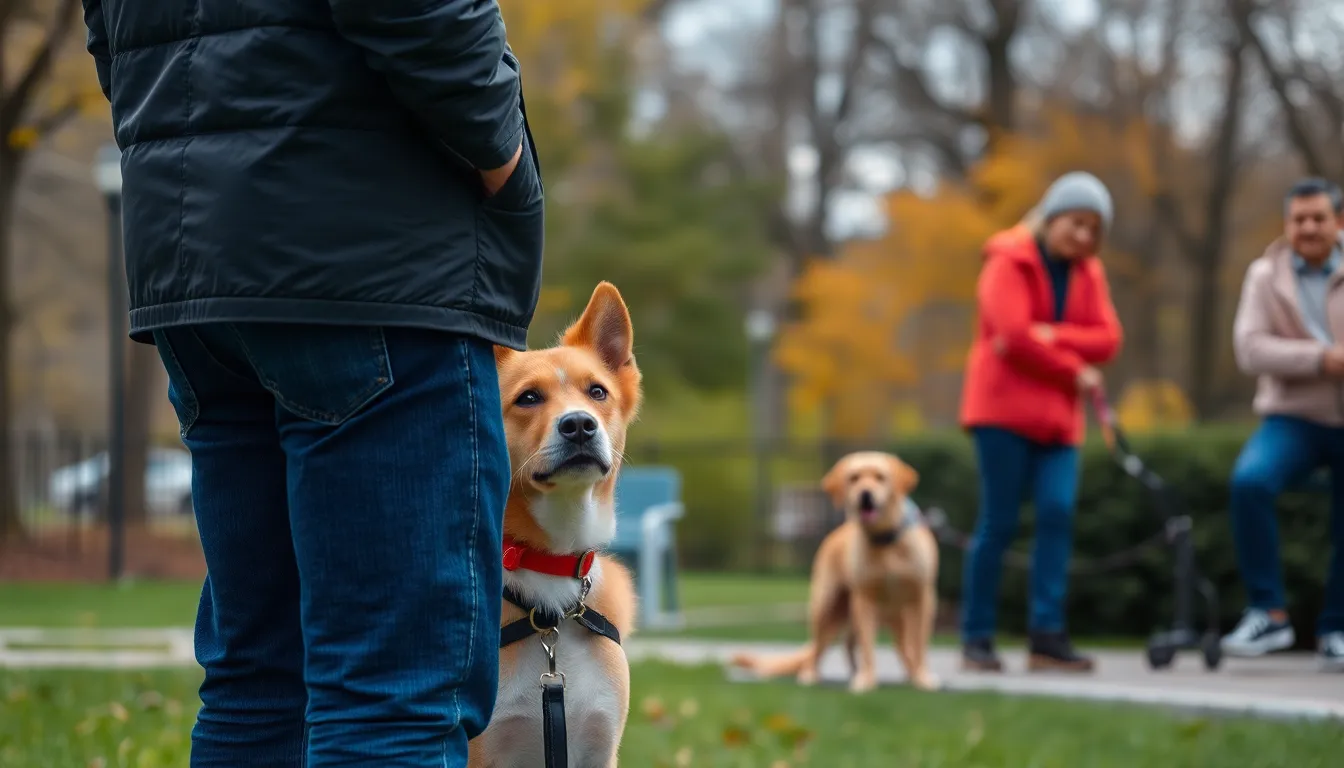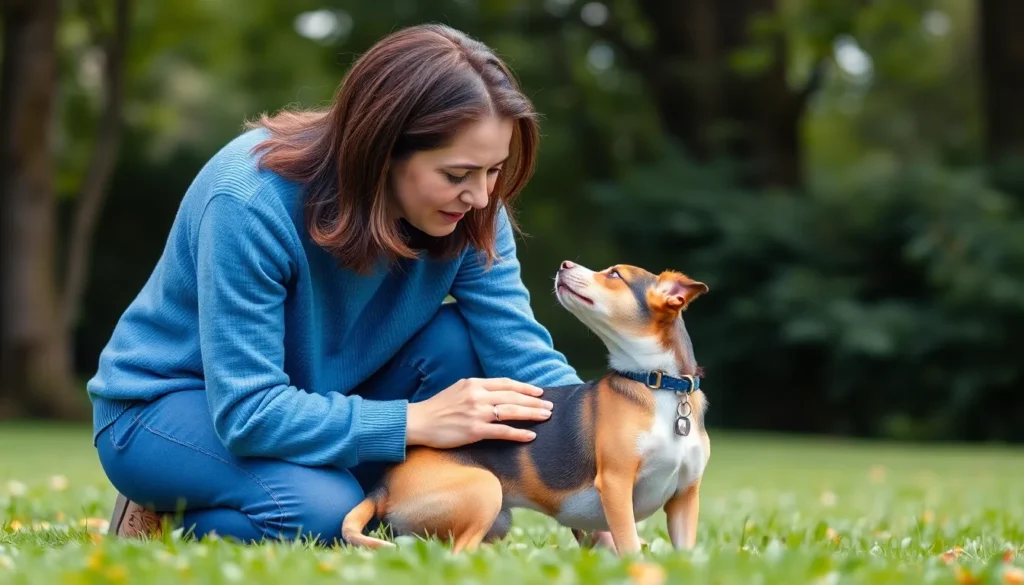Protecting our beloved canine companions from harm remains one of our most important responsibilities as pet owners and animal advocates. Unfortunately sexual abuse of dogs is a disturbing reality that occurs more frequently than many realize. Recognizing the warning signs can mean the difference between ongoing suffering and getting a dog the help they desperately need.
We’ve compiled this comprehensive guide to help you identify the physical behavioral and emotional indicators that may signal abuse. While this topic is difficult to discuss it’s crucial information that could save a dog’s life. Understanding these signs empowers us to take action and protect vulnerable animals in our communities.
By learning to recognize these red flags we can become better advocates for dogs who cannot speak for themselves. Whether you’re a pet owner veterinary professional or simply someone who cares about animal welfare this knowledge is invaluable for keeping dogs safe.
Recognizing Physical Signs of Abuse in Dogs
Physical indicators often provide the clearest evidence of sexual abuse in dogs. We can identify these signs through careful observation of visible injuries and changes in our dog’s physical condition.
Unexplained Injuries and Trauma
Unexplained injuries frequently appear in dogs who have experienced sexual abuse. Bruising around the hindquarters represents one of the most common physical indicators we observe. Scratches or bite marks on the back legs often accompany these injuries.
Torn or damaged fur in sensitive areas raises immediate concern. We notice this damage typically concentrates around the genital region or inner thighs. Swelling in unusual locations without apparent cause warrants immediate veterinary attention.
Cuts or abrasions that don’t align with normal play or exercise patterns indicate potential abuse. Fresh wounds that appear repeatedly suggest ongoing trauma. We document these injuries with photographs and detailed notes for veterinary records.
Changes in Gait or Movement
Changes in gait or movement patterns signal potential physical trauma from abuse. Dogs experiencing this trauma often walk with a stiff or unnatural posture. We observe reluctance to sit or lie down normally.
Limping without obvious injury to paws or legs indicates possible internal trauma. Difficulty rising from lying positions becomes apparent in affected dogs. We notice these movement changes persist beyond normal recovery periods for typical injuries.
Sensitivity when touching the rear end or hindquarters creates defensive reactions. Dogs may cry out or snap when we attempt to examine these areas. This protective behavior extends to routine activities like grooming or veterinary examinations.
Genital or Anal Injuries
Genital or anal injuries represent the most direct physical evidence of sexual abuse in dogs. Visible trauma to these sensitive areas requires immediate veterinary intervention. We observe bleeding, swelling, or discharge from genital or anal openings.
Tears or lacerations in these regions indicate forced trauma. Unusual odors emanating from genital areas suggest infection or injury. We notice dogs excessively licking or attempting to clean these areas more frequently than normal.
Difficulty with normal bodily functions like urination or defecation accompanies these injuries. Pain during these activities causes dogs to avoid or delay elimination. We monitor for blood in urine or stool as additional indicators of internal trauma.
Behavioral Changes That May Indicate Abuse

Behavioral shifts often serve as the first warning signs that a dog has experienced sexual trauma. We observe these changes as dogs struggle to cope with their traumatic experiences through altered responses to people and situations.
Fear and Anxiety Responses
Dogs display heightened fear or anxiety around exact individuals who may have abused them. We notice these animals avoiding certain people entirely or exhibiting stress behaviors like excessive panting and repetitive yawning when those individuals are present. Trembling becomes common even in safe environments, and we see dogs cowering or attempting to hide when approached by unfamiliar people.
Exact triggers can cause immediate panic reactions in abused dogs. We document cases where dogs react fearfully to particular sounds, movements, or even clothing styles that remind them of their abuser. Sleep disturbances frequently occur, with dogs showing restlessness during nighttime hours and difficulty settling into comfortable positions.
Regression in Training and Social Behavior
Previously well-trained dogs experience important declines in their learned behaviors following sexual abuse. We observe house-trained animals having frequent accidents indoors, ignoring basic commands they once followed reliably, and forgetting established routines. Social interactions become problematic as these dogs withdraw from family members and display aggressive responses in situations where they were previously calm.
Communication patterns change dramatically in abused dogs. We see animals that once enjoyed human interaction becoming increasingly isolated and unresponsive to their names or familiar voices. Eating habits deteriorate as dogs lose interest in food or become possessive over their meals in ways they never exhibited before.
Abnormal Sexual Behaviors
Inappropriate mounting behaviors emerge in dogs following sexual trauma, regardless of their age or previous behavioral patterns. We document cases where dogs engage in excessive mounting of objects, other animals, or people at inappropriate times and in unsuitable social contexts. These behaviors often appear compulsive and difficult to redirect through normal training methods.
Sexual behaviors become misplaced as traumatized dogs struggle to understand appropriate boundaries. We observe dogs displaying sexual interest toward inappropriate targets or at unusual frequencies that don’t align with their natural breeding cycles or social development stages. Self-directed sexual behaviors also increase as dogs attempt to cope with their trauma through repetitive actions.
Health Indicators and Medical Signs

Medical complications often emerge following sexual abuse incidents and provide clear evidence of trauma that requires immediate veterinary intervention. These health indicators typically manifest alongside physical injuries and can persist long after initial trauma occurs.
Infections and Medical Complications
Dogs subjected to sexual abuse frequently develop infections around the genital area, anus, or rectum due to forced penetration or inappropriate contact. These infections can manifest as unexplained abscesses, bacterial infections, or fungal growths that appear without typical causes like poor hygiene or medical conditions.
Urinary tract infections occur more commonly in abused dogs, presenting symptoms like frequent urination, straining, or blood in urine. Rectal infections may cause discharge, foul odors, or visible irritation around the anal opening. Medical complications can include internal injuries that aren’t immediately visible, such as tears in delicate tissue or damage to internal organs.
Veterinary examination often reveals infections that don’t respond to standard treatments, indicating trauma related causes. Secondary infections can develop when initial wounds become contaminated, creating ongoing health issues that require extended medical care.
Pain Responses and Sensitivity
Abused dogs demonstrate heightened sensitivity in areas where trauma occurred, exhibiting pain responses that seem disproportionate to normal handling. Touching or examining genital and anal regions triggers extreme reactions, including yelping, snapping, or attempts to escape even gentle contact.
Dogs may show increased sensitivity during routine activities like sitting, defecating, or urinating. They often adopt unusual postures to avoid pressure on affected areas, such as standing instead of sitting or lying on their sides rather than normally.
Pain responses can extend beyond physical touch to include anxiety when approached from behind or panic when certain positions are assumed during play or grooming. These behavioral pain indicators often persist longer than physical injuries heal.
Appetite and Weight Changes
Trauma related stress commonly causes important changes in eating patterns among sexually abused dogs. Many dogs experience complete loss of appetite immediately following abuse incidents, refusing food for extended periods that result in noticeable weight loss.
Some dogs develop food aversion behaviors, eating only when alone or refusing meals from exact people. Others may exhibit compulsive overeating as a coping mechanism, though appetite loss remains more common in abuse cases.
Weight fluctuations happen rapidly in traumatized dogs, with some losing 10-15% of their body weight within weeks of abuse incidents. These changes often accompany other stress indicators like digestive issues, vomiting, or diarrhea that compound nutritional problems.
What to Do If You Suspect Abuse

We must act swiftly when we identify potential signs of sexual abuse in dogs. Our response can make the difference between continued suffering and recovery for the affected animal.
Documenting Evidence Safely
We recommend taking photos or videos of any visible signs of abuse from a safe distance without putting ourselves or others at risk. Visual documentation becomes crucial evidence for authorities and veterinarians who investigate these cases. Photographs of unexplained injuries around the genital area or rectum provide concrete proof of trauma. We capture images of behavioral changes by recording the dog’s reactions to exact triggers or situations. Written records of dates, times, and exact observations strengthen our documentation efforts. Evidence collection requires discretion to avoid alerting potential abusers who might escalate their harmful behavior.
Contacting Appropriate Authorities
We contact local animal control or law enforcement immediately upon suspecting sexual abuse cases. Organizations like the ASPCA provide 24-hour hotlines for reporting animal cruelty incidents across the United States. Local humane societies offer specialized investigation units trained to handle sexual abuse cases involving animals. Police departments often have animal cruelty divisions that coordinate with veterinary forensic experts during investigations. We provide authorities with our documented evidence including photographs, videos, and written observations. Emergency situations require calling 911 when we witness abuse in progress or discover a dog in immediate danger.
Providing Immediate Care and Support
We ensure the dog reaches safety by removing them from the abusive environment when possible. Veterinary care becomes our top priority since sexual abuse often causes internal injuries, infections, and trauma requiring medical intervention. Emergency veterinary clinics provide after-hours care for dogs showing signs of genital injuries, bleeding, or severe behavioral distress. We create a comfortable, quiet environment that reduces stress triggers and promotes healing. Specialized animal behaviorists help address trauma-related behavioral changes through customized rehabilitation programs. Food, water, and gentle handling techniques support the dog’s physical recovery while we work with professionals to address psychological trauma.
Prevention and Education

Preventing sexual abuse against dogs requires proactive measures and community-wide awareness. We can protect vulnerable animals through strategic environmental controls and educational initiatives.
Creating Safe Environments
We must maintain constant supervision when dogs are in public spaces or unfamiliar environments. Secure fencing around properties prevents unauthorized access to our pets and creates physical barriers against potential abusers. Dogs left unattended in yards or kennels face increased vulnerability to abuse incidents.
Installation of security cameras in areas where dogs spend time provides additional protection and evidence collection capabilities. We recommend avoiding situations where dogs are left alone with individuals who haven’t been thoroughly vetted or trusted. Boarding facilities and pet care services require careful research and verification of their safety protocols before entrusting our animals to their care.
Public spaces like dog parks demand heightened awareness of surrounding individuals and their interactions with animals. Dogs should remain within our direct line of sight at all times during outdoor activities.
Recognizing Risk Factors
Individuals displaying excessive attention toward dogs in inappropriate contexts present potential warning signs. We observe concerning behaviors when people show unusual interest in touching dogs in sensitive areas or attempting to isolate animals from their owners. Persistent requests to spend time alone with dogs or offers to provide unsupervised care from unfamiliar individuals require careful evaluation.
People who demonstrate inappropriate sexual interest in animals through comments or behaviors represent clear risk factors. We monitor for individuals who express unusual fascination with animal anatomy or make inappropriate jokes about sexual contact with pets. Previous convictions for animal abuse or sexual offenses indicate elevated risk levels that demand increased vigilance.
Social isolation of potential abusers often accompanies concerning behavioral patterns. These individuals may lack normal social connections and demonstrate poor boundaries with both animals and humans.
Community Awareness and Reporting
Education programs within neighborhoods increase collective awareness of abuse warning signs and prevention strategies. We encourage participation in community workshops that teach residents how to identify suspicious behaviors and physical signs of animal abuse. Local animal welfare organizations provide resources and training materials for community education initiatives.
Reporting suspicious behavior to local animal services or law enforcement requires immediate action when abuse is suspected. We document observations with exact details including dates, times, locations, and descriptions of concerning incidents. Photographic evidence of physical signs supports formal complaints and investigations.
Community reporting systems create networks of protection around vulnerable animals. Neighbors who maintain awareness of unusual activities involving pets contribute to early detection and intervention efforts. Animal welfare organizations offer confidential reporting options for individuals concerned about potential retaliation from suspected abusers.
We establish communication channels with local veterinarians who can provide guidance on recognizing medical signs of abuse and proper documentation procedures for suspected cases.
Conclusion
We’ve covered the critical warning signs that every dog owner and animal advocate should recognize. From physical injuries and behavioral changes to health complications and emotional trauma these indicators can mean the difference between continued suffering and life-saving intervention.
Our responsibility extends beyond simply knowing these signs. We must act swiftly when we suspect abuse document evidence carefully and connect with the proper authorities and veterinary professionals who can provide immediate help.
Prevention remains our strongest tool in protecting vulnerable animals. Through community awareness proper supervision and education we can create safer environments for dogs everywhere. Every person who understands these warning signs becomes another guardian in the fight against animal cruelty.
The dogs in our communities depend on us to be their voice when they can’t speak for themselves.
Frequently Asked Questions
What are the most obvious physical signs that a dog has been sexually abused?
The clearest physical indicators include unexplained injuries around the hindquarters, bruising, scratches on back legs, and torn fur near the genital region. Look for bleeding, swelling, or unusual odors around genital or anal areas. Changes in movement patterns, such as stiff posture or reluctance to sit, also signal potential trauma requiring immediate veterinary attention.
How do behavioral changes indicate sexual abuse in dogs?
Dogs may exhibit heightened fear or anxiety around certain individuals, avoiding people or displaying stress behaviors like excessive panting and trembling. Previously well-trained dogs might regress in learned behaviors, experiencing indoor accidents and withdrawing from social interactions. Sleep disturbances and abnormal sexual behaviors like inappropriate mounting may also emerge following trauma.
What health complications commonly occur after sexual abuse?
Abused dogs frequently develop infections around the genital area, anus, or rectum, including bacterial infections and abscesses. Urinary tract infections and rectal infections are common. Dogs may show extreme pain responses with heightened sensitivity in trauma areas. Appetite changes and significant weight fluctuations often occur due to trauma-related stress.
What should I do if I suspect a dog is being sexually abused?
Act swiftly by documenting evidence safely through photos or videos of visible abuse signs. Contact local animal control or law enforcement immediately, and utilize resources like the ASPCA for reporting animal cruelty. Provide immediate care by ensuring the dog’s safety, seeking veterinary attention, and creating a comfortable healing environment.
How can sexual abuse against dogs be prevented?
Maintain constant supervision of dogs in public spaces and secure properties with proper fencing. Install security cameras and carefully vet individuals who interact with your dogs. Be aware of risk factors like individuals showing inappropriate attention toward dogs. Community awareness, education programs, and reporting suspicious behavior help create protective networks for vulnerable animals.
What role do veterinarians play in identifying abuse cases?
Veterinarians are crucial in identifying physical evidence of abuse through medical examinations. They can document injuries, treat infections, and provide expert testimony for legal proceedings. Veterinary professionals are trained to recognize trauma-related symptoms and can recommend specialized animal behaviorists to address psychological trauma, ensuring comprehensive care for affected dogs.














